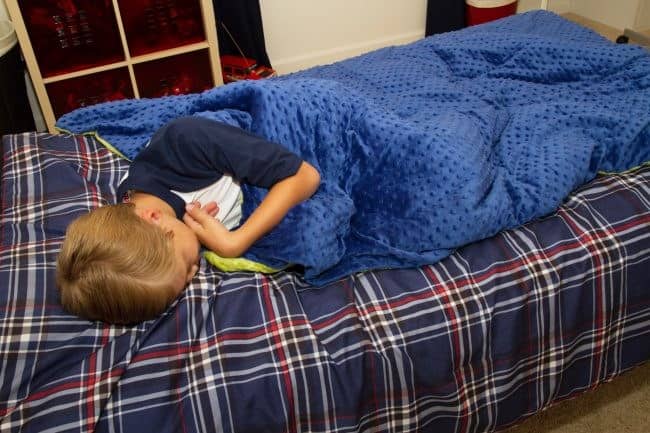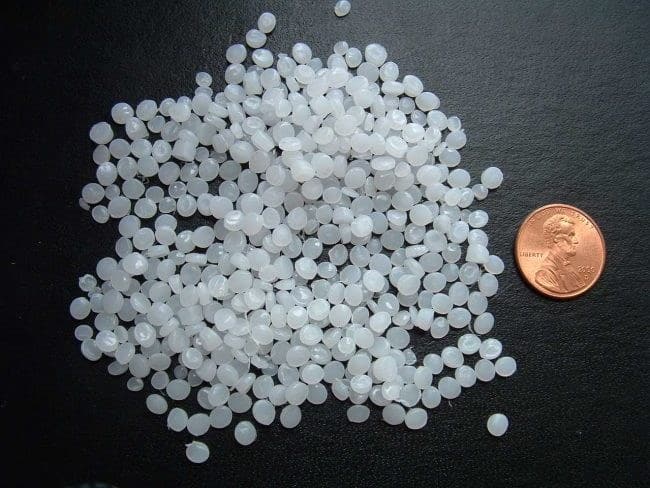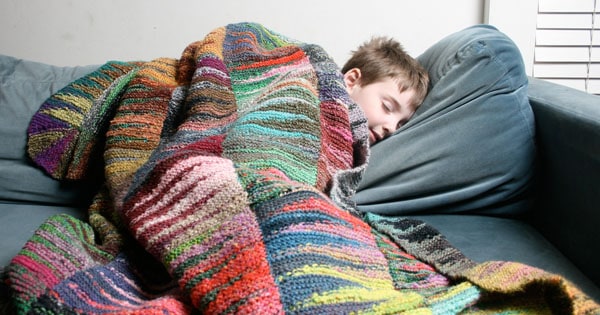A weighted blanket can be a great way to get a good night’s sleep. They provide gentle pressure that can help you relax and fall asleep faster. You can buy a weighted blanket online or in stores, but they can be expensive. If you want to save money, you can make your own DIY weighted blanket.
What Makes Weighted Blankets So Special?
Weighted blankets simulate the feeling of being given a tight, warm hug; it’s designed to distribute the entirety of its weight evenly on the person using it. There’s a variety of weights and sizes to choose from, as it is recommended that a blanket weigh 10% of the total body weight of the user. It can weigh as much as 40 lbs for an adult sized blanket, or as little as 5 lbs for a kid-sized blanket.
As these blankets use the concept of “deep touch pressure”, the gentle weight it puts on the user causes a calming effect. Deep touch pressure is “a form of tactile sensory input which is often provided by firm holding, firm stroking, cuddling, hugging, and squeezing.” These forms of touch increase the endorphin levels while simultaneously decreasing heart rate and blood pressure. It also causes the release of serotonin and dopamine in the brain, calming down the nervous system.
Who Can Benefit From Weighted Blankets?
Anyone at any age can benefit from the therapeutic effects of a weighted blanket. It is a safe and effective solution for sleep disorders and anxiety as it eliminates the need for drug therapy. Even when sitting upright and placing the weighted blanket on the legs or shoulders can induce the same relaxing effect as sleeping under it.

There are a vast amount of disorders that weighted blankets can help with. Here are just a few of them:
- Sensory Disorders
- Sleep Disorders
- ADD / ADHD Spectrum Disorder
- Restless Leg Syndrome
- Anxiety and Depression
- Perimenopause and Menopause
- Alzheimer’s or Parkinson’s Disease
- Autism
- Post-Traumatic Stress Disorders
How To Make Your Own Weighted Blanket
Weighted blankets are surprisingly easy to make yourself. All you need to do is round up your choice of fabric and some plastic pellets, and with a few basic sewing skills, you can create your own weighted blanket in no time.

Pick your fabric of choice
Weighted blankets can be made from a variety of materials to suit your preference. The material that gives it weight, however, mostly comes from plastic pellets. We’ve arranged the lightest, most breathable material to the most structured fabric options out there, so you can decide which type of weighted blanket would suit you most:
- Cotton: For people who are very particular about the feel and print of their blankets, Kona Cotton in particular makes for a great choice. Endless prints and colors can be printed on cotton fabrics and those who opt for a higher thread count can rely on this kind of material for that.
- Flannel: This material is a great option to experience the breathability of cotton, but at the same time offer more warmth. Flannel also comes in a wide array of prints and colors like cotton.
- Satin-cotton: This type of material is suitable for those who enjoy the feel of satin but are sensitive to heat. Satin-cotton can be used by itself or paired with cotton on its other side. This combination is best for users who enjoy the feel of both fabrics.
- Minky: This synthetic option is ideal for babies or children, as it feels extraordinarily soft, while still providing warmth.
- Linen-rayon blend: For those looking for a more industrial-strength type of fabric, this material should suit you best. Blankets made from this fabric are sturdier and less prone to tears and stretch, although they do feel a bit itchy and are less soft.
Preparation:
- Quality Plastic Pellets – take 1 pound of pellets for every 10 pounds of your own body weight, then add an extra pound
- Your preferred fabric
- 5 yards of fabric in total – 2.5 yards for the top and 2.5 yards for the bottom of the blanket
- Thread
- Scissors
- Measuring tape
- Ruler
- A small scale
- Pins
- Sewing machine
Assembly:
- Decide on the size of your blanket. For the purpose of this how-to guide, assume that we are creating a blanket that fits in a twin bed (40” x 76”). Remember that if you intend to use the heavier type of fabric (e.g. linen-rayon blend), weigh it prior and add its weight to the total weight of the finished blanket.
- Determine the right side of the fabric and place them together.
- Measure and mark two inches towards the interior of two of the long sides of the fabric. Do the same for one of the shorter sides and leave the other side open for the pellets.
- Sew the lines together and then turn the fabric inside out. You can also iron the edges at this point if you prefer to keep a crisp and neat edge.
- Add the plastic pellets by following these steps:
- Create a uniform grid on the unstitched area of the blanket. Since a total of 4” were taken out to stitch together the sides to create an edge, the remaining area should be about 36” x 72”.
- Create even squares with the remaining area. With 6”x 6” square grids, there should be perfect six squares across and another 12 up.
- Weigh and divide pellets in unformed portions for every square.
- Sew along the grid lines to create channels that are six inches apart from each other. Pour the proper amount of pellets on the square.
- From the bottom seam, measure six inches, sew a line across to seal the line of the squares that are already filled with pellets.
- Repeat steps 6 and 7 until all the channels are filled and sealed.
- To finish, seal the remaining two inches of opening in the fabric by sewing them together. Now you can enjoy your very own homemade weighted blanket!

Instead of using plastic pellets, uncooked beans or rice also make great weight substitutes. But these need to be stored in ziplock bags before placed in the squares to prevent the formation of mold or decay.

